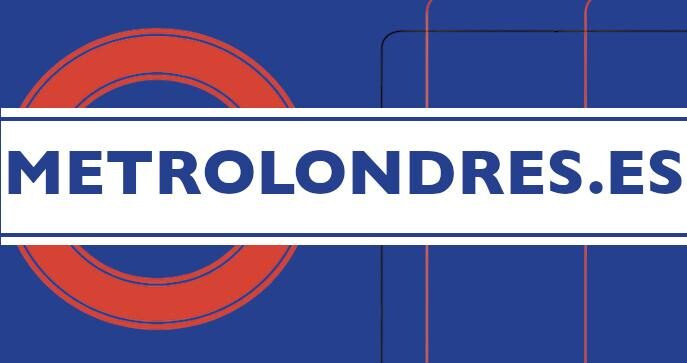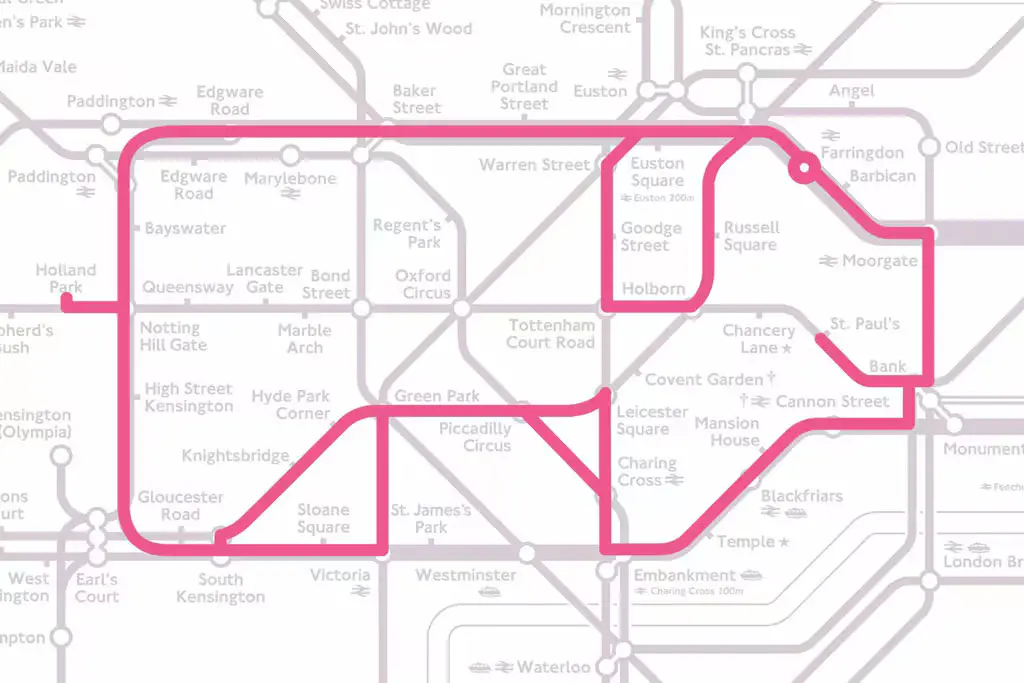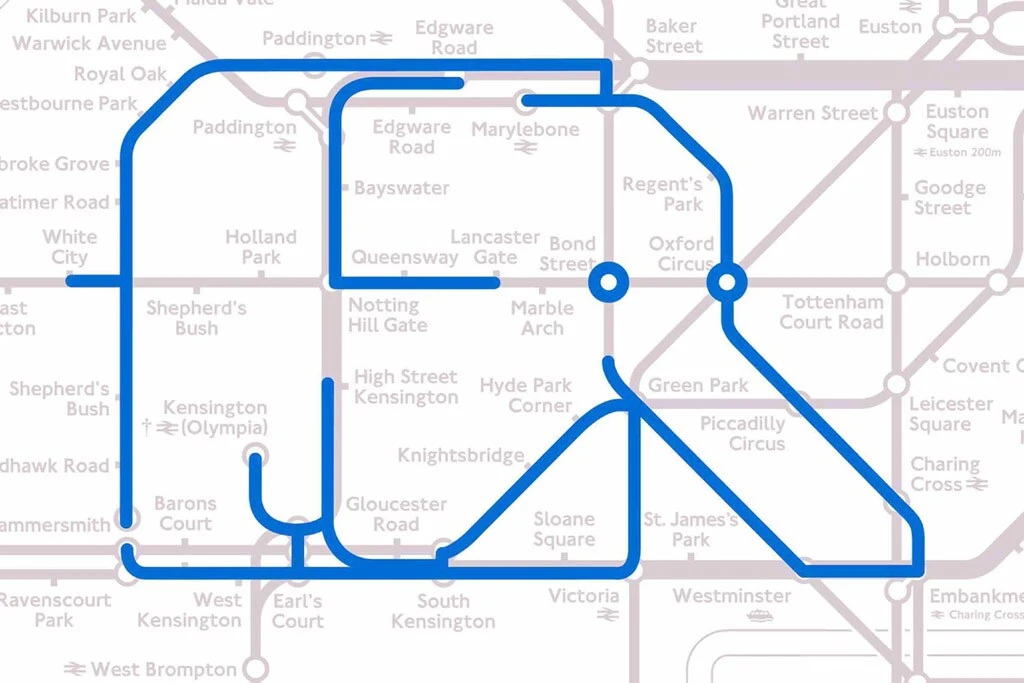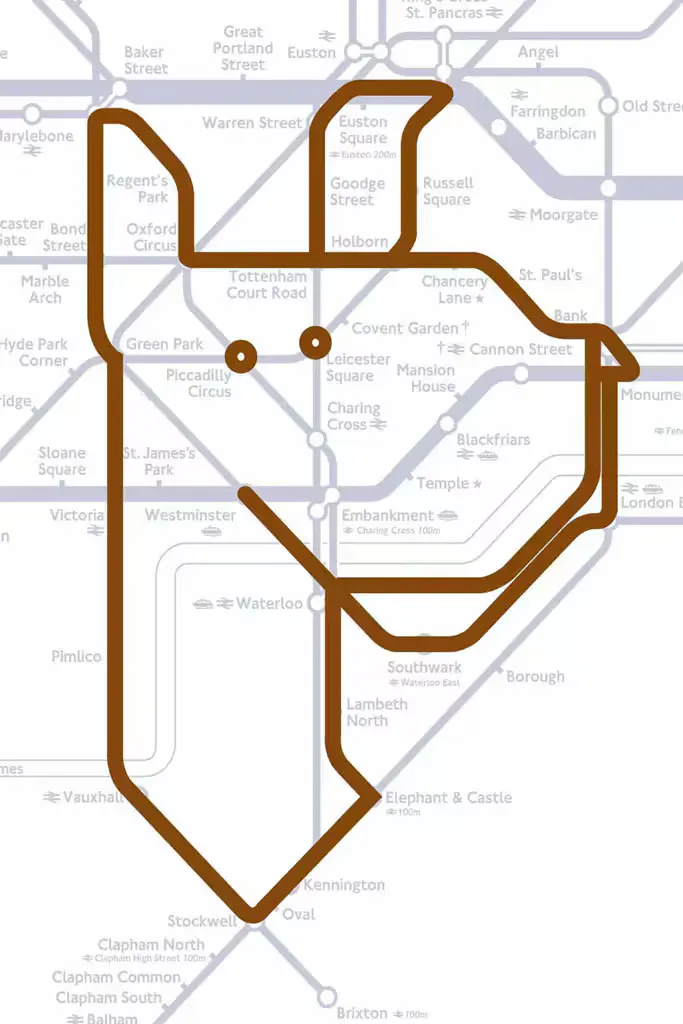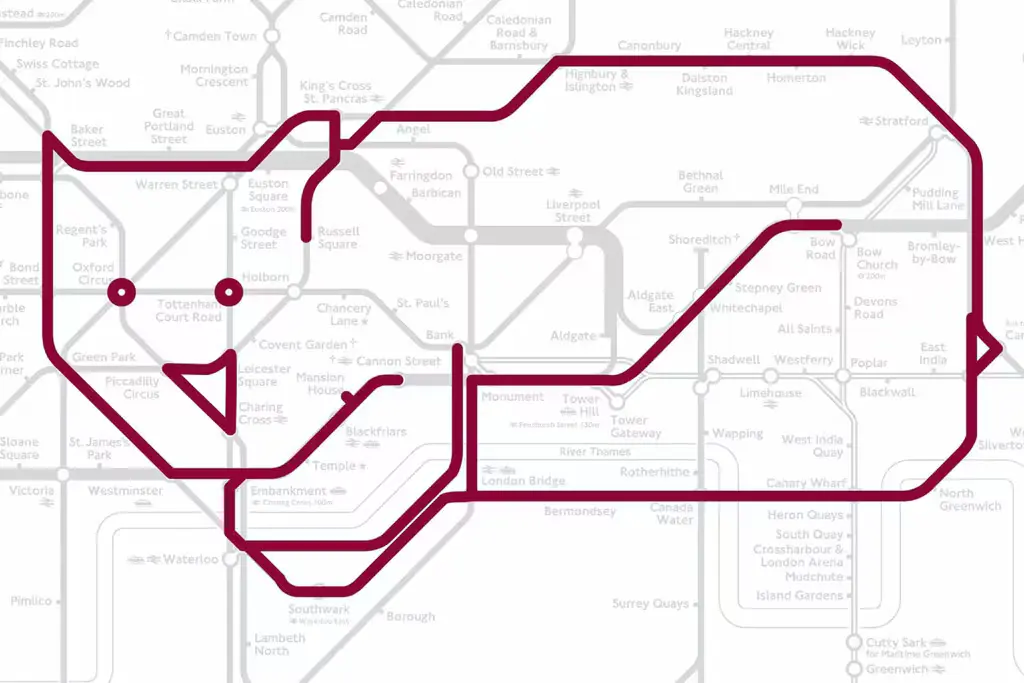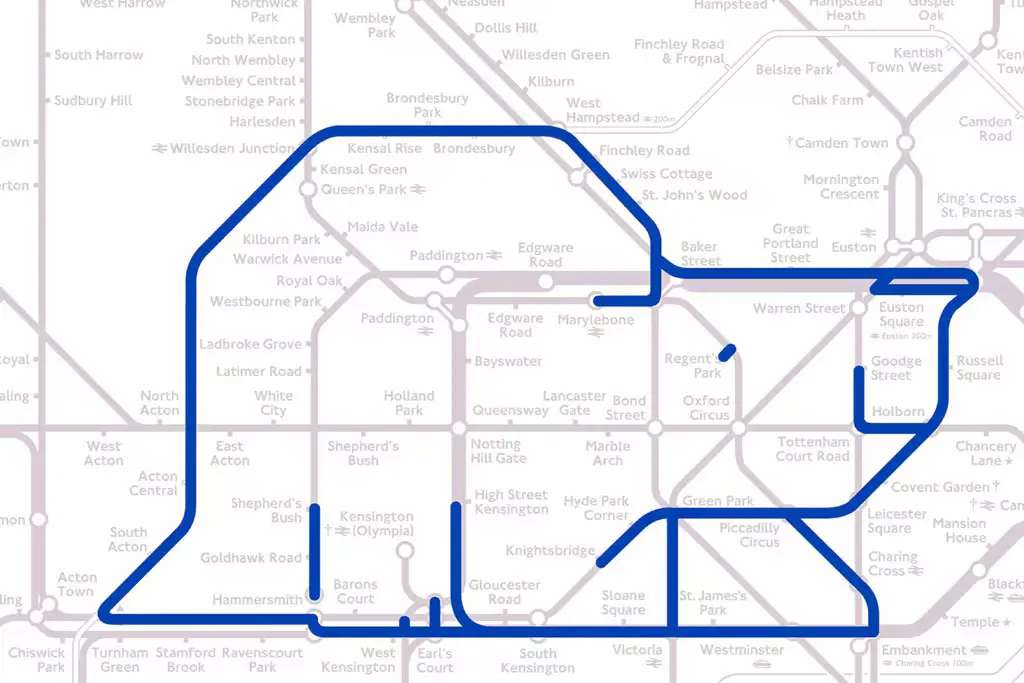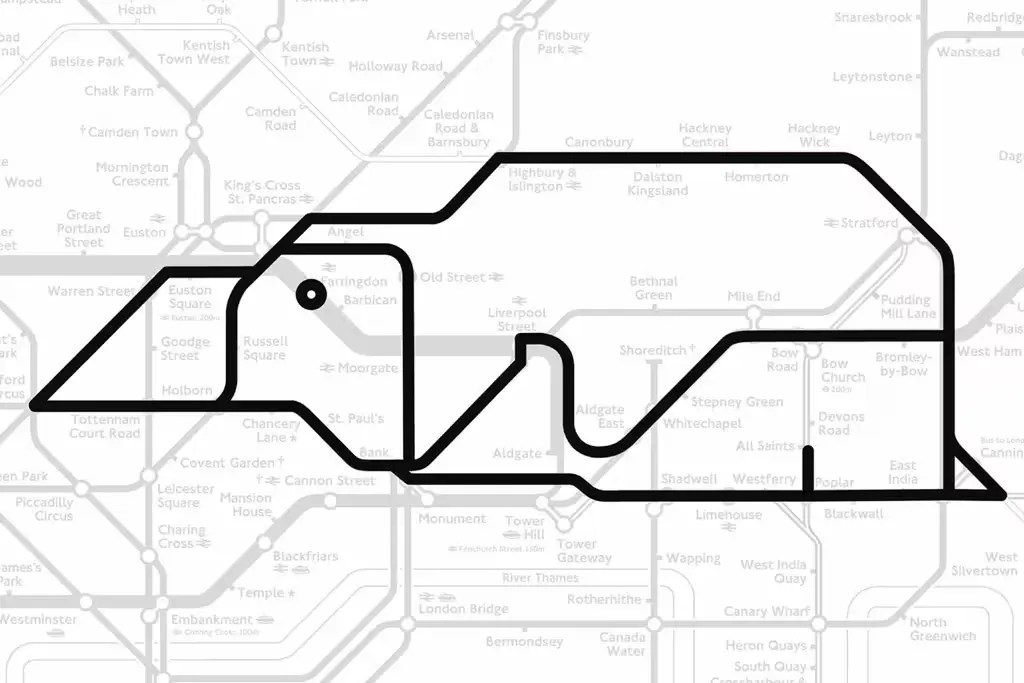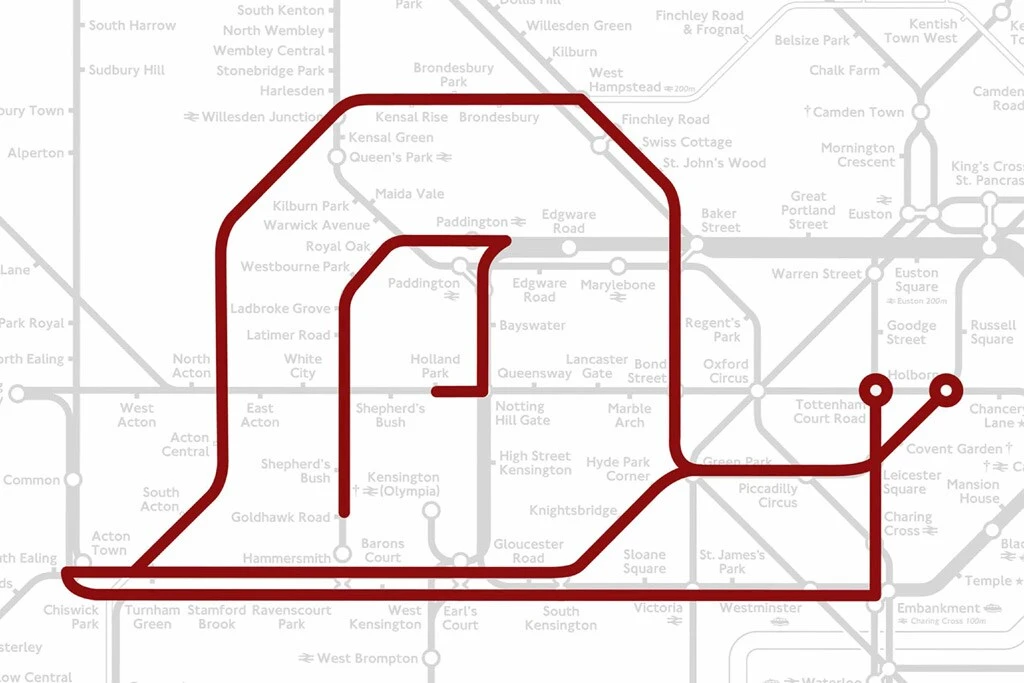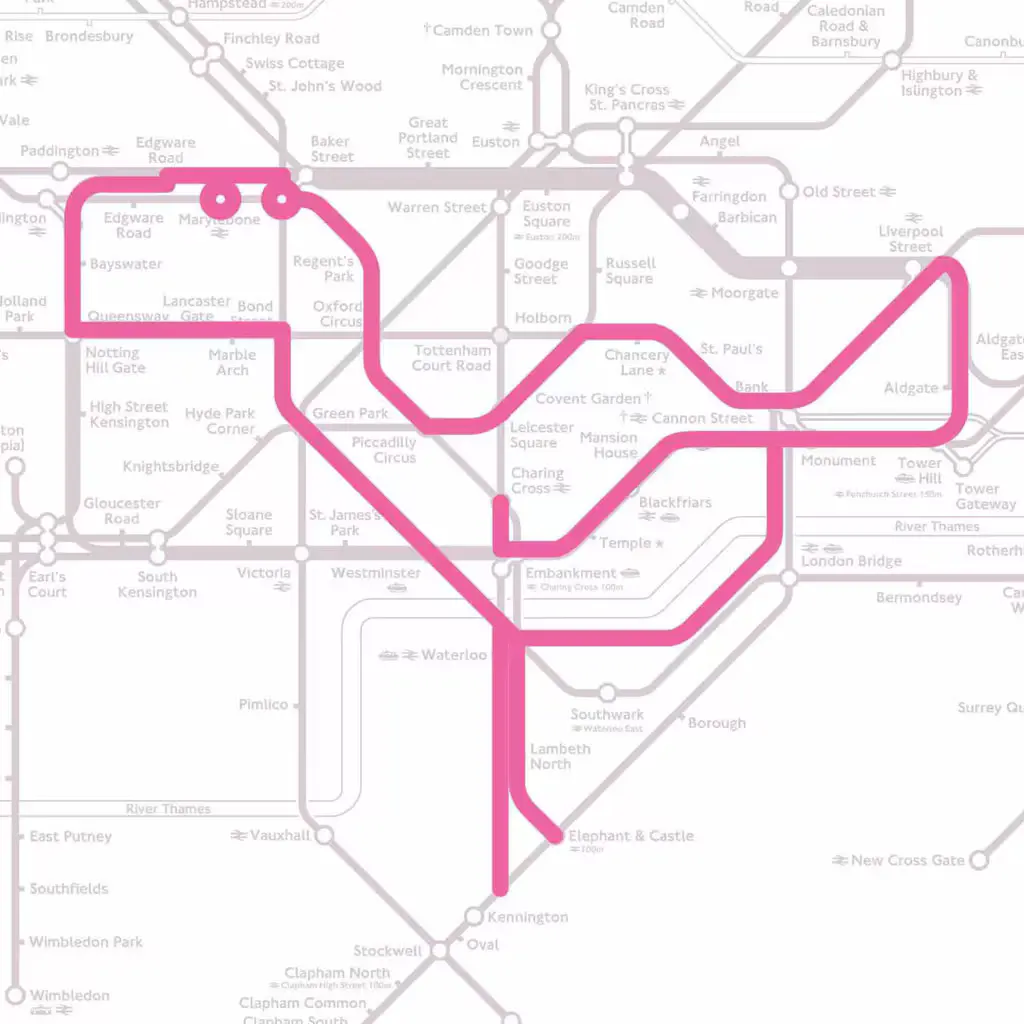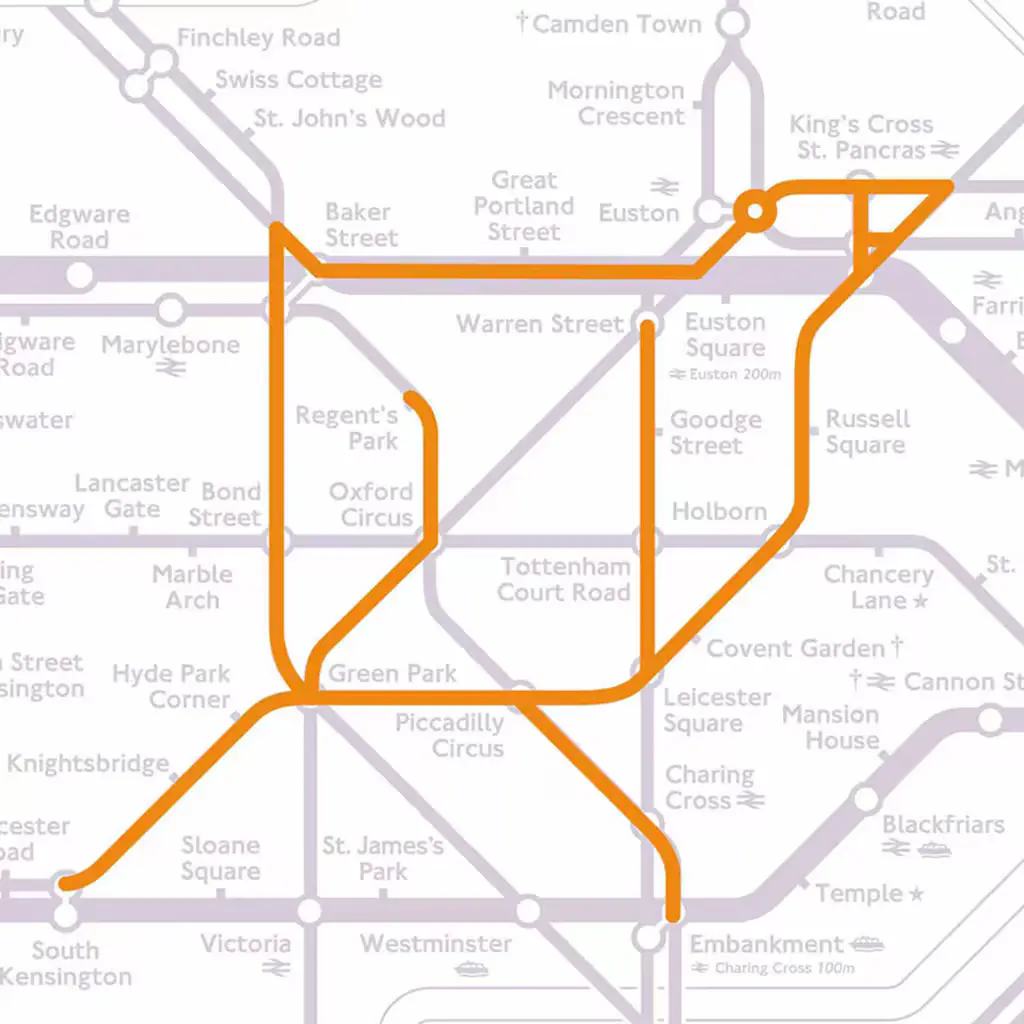The Origin of the Phenomenon: An Elephant in the Tube
This intriguing tradition began in 1988 when Paul Middlewick, a regular commuter, made an unexpected discovery.
While observing the famous London Underground map, Middlewick realized that by connecting different stations and lines, he could visualize the shape of an elephant. This discovery was not just a mere coincidence but sparked a wave of creativity among Underground users, who began searching for other animal figures in the map’s design.
Middlewick’s “elephant,” discovered purely by chance, became the first of many animals identified on the Underground map.
Over the years, this activity has transformed into a pastime for many, and what began as an isolated finding soon became a cultural phenomenon that continues to this day.
A Zoo in the Underground Lines
Since that first elephant, Underground enthusiasts have found a total of 22 different animals hidden in the map. Although I have read that there are 35, I have yet to find conclusive proof. Later on, you will be able to see them with your own eyes.
These animals, which include both terrestrial and marine creatures, are the result of combining stations, lines, and junctions on the map.
Although these figures were not intentionally designed, the imagination of observers has allowed them to emerge naturally by connecting the dots on the map.
- Elephant: The pioneer of this curious tradition, found by Paul Middlewick.
- Dog: A figure many associate with loyalty and companionship.
- Cat: The feline that seems to lurk between the Underground lines.
- Bear: One of the largest and most recognizable figures on the map.
- Penguin: An Antarctic inhabitant that has found its place in the cold underground stations.
- Smiling Whale: One of the most endearing figures, representing the vastness of the deep sea.
- Snail: Slowly moving through the Underground tunnels.
- Flamingo: Waiting on one leg at the station for the train to arrive.
- Hen: Sitting on an egg, keeping it warm while in a cool Underground station.
- Pig: Running along the tracks of the London Underground.
- Seal: Jumping between the waves of the Underground’s subterranean river.
- Fish: Swimming through the map’s aquatic lines.
These are just a few examples of the animals that make up this hidden “zoo.” Each one has its own story, and in many cases, these discoveries are due to the careful observation and creativity of passengers.
Imagination in the Service of the Journey
Discovering these animals has become a sort of “treasure hunt” while waiting for the train or traveling through the city. It’s a way to make time in the Underground more entertaining and, at the same time, to appreciate the ingenuity of transport maps.
Cultural Impact: From Curiosity to Commercial Product
Over time, these hidden animals have transcended mere entertainment. The phenomenon has become so popular that products based on these “hidden” animals have been created. From t-shirts and mugs to posters and mobile apps, the London Underground’s zoo has inspired designers and merchants.
These products not only serve as unique souvenirs from the British capital but also celebrate creativity and the ability to see the extraordinary in the ordinary. For Londoners and visitors alike, carrying a memento of these animals is a way to keep the magic and mystery of the London Underground alive.
How to Join the Animal Hunt
You don’t need to sign up on a website or program. Whether you’re in London or not, to join the hunt for animals on the Underground map, all you need is a map, your imagination, and some free time. Here are a few tips:
- Observe carefully: Take your time studying the map. The figures are not always obvious at first glance.
- Connect the stations: Use your imagination to connect stations and lines. Sometimes, you need to look at the map from different angles.
- Share your discoveries: If you find a new animal, share it with other enthusiasts. Social media and online forums are great places to showcase your findings.
- Enjoy the journey: Remember that the most important thing is to enjoy the process. Not every day brings a new animal discovery in the Underground, but the experience is always rewarding.
More than a Map, a Cultural Treasure
The London Underground map is much more than just a tool to get around the city. It’s a canvas full of possibilities, where passengers’ imaginations have created a hidden zoo that adds a touch of magic to every journey.
Since Paul Middlewick discovered the first elephant in 1988, the map has become a symbol of creativity and fun, reminding us that even in the most common places, we can find something extraordinary.
The next time you’re in London, take a moment to look at the Underground map with fresh eyes; you never know what creature you might discover in its web of lines and stations.
